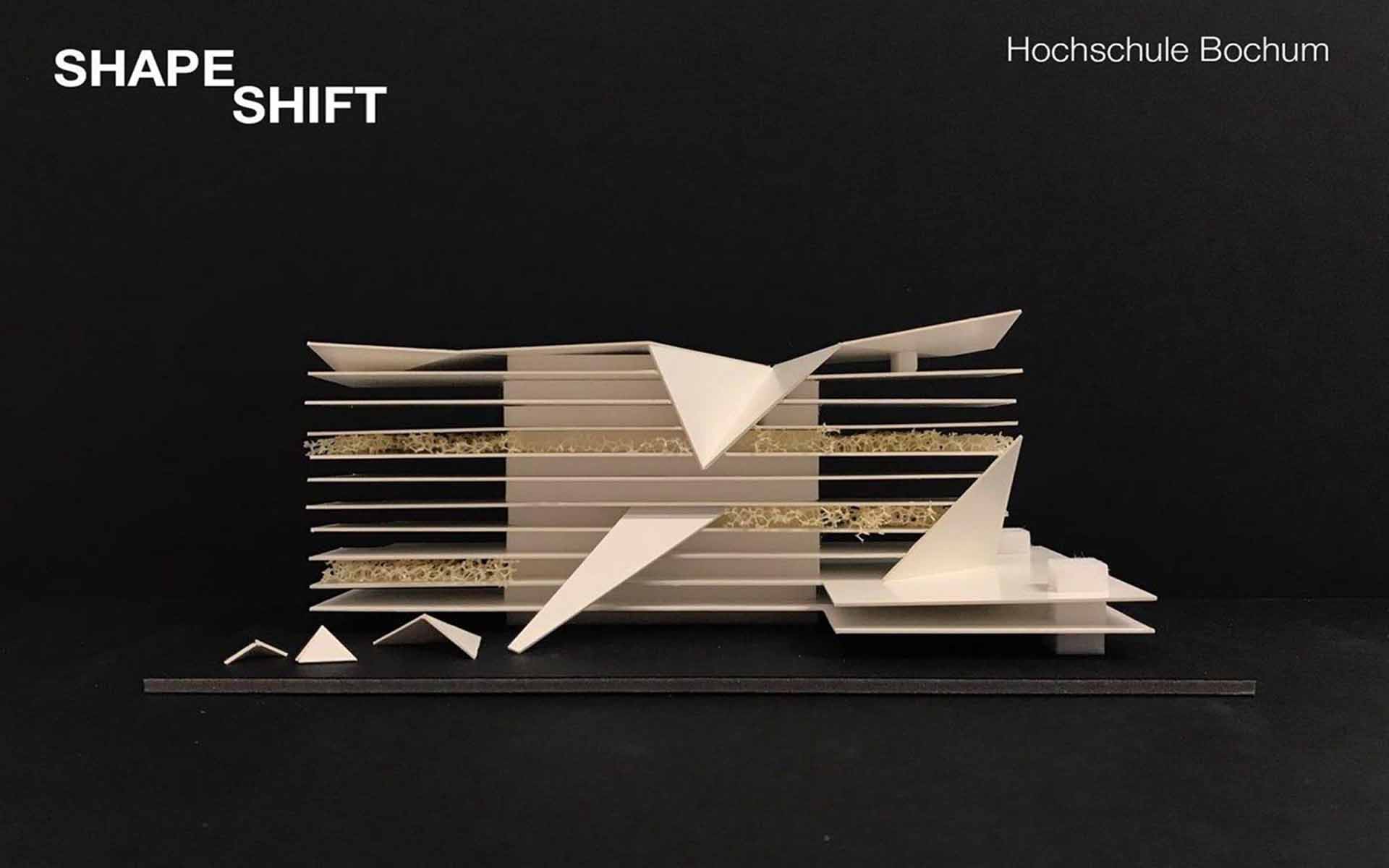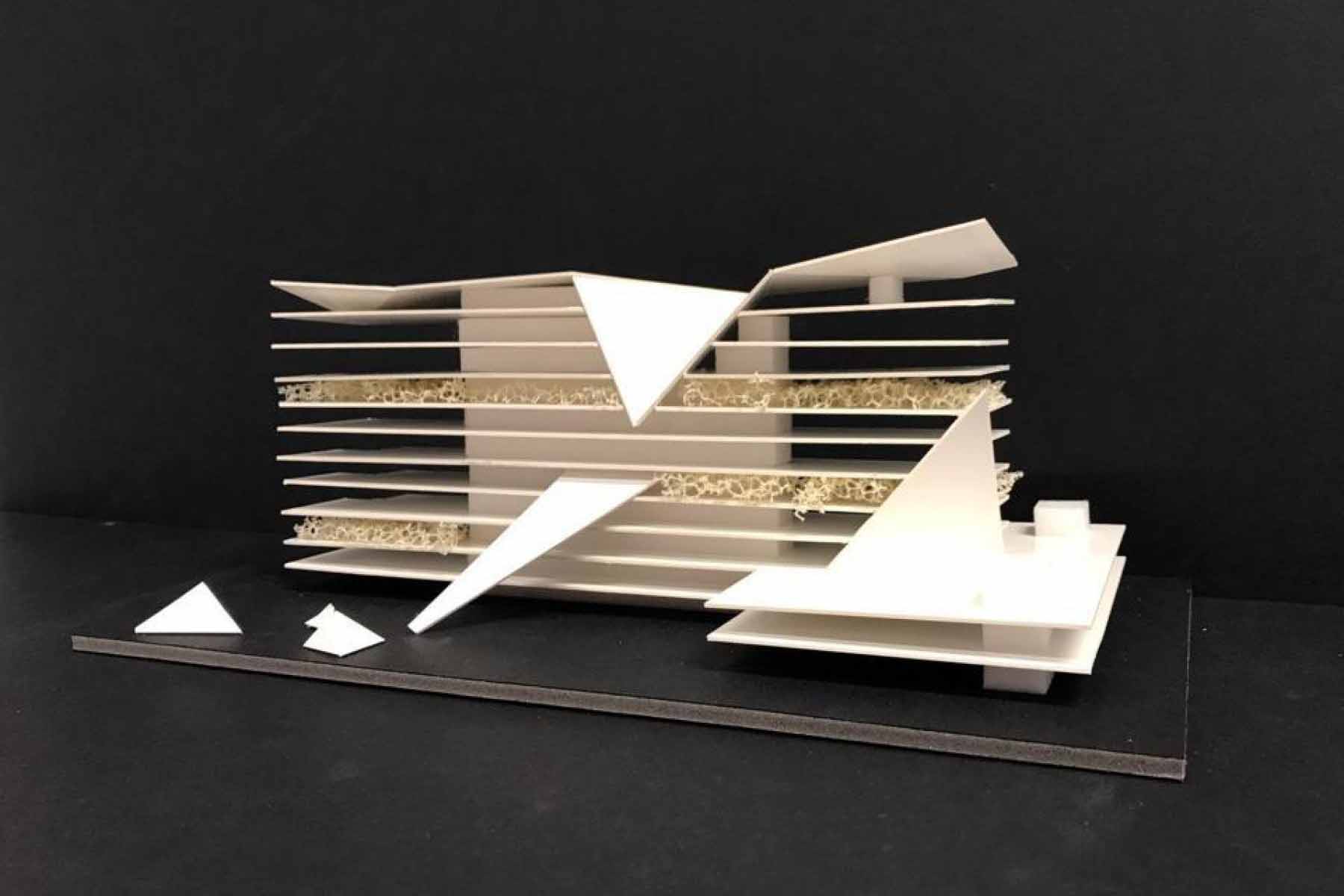

Julius Kallinowski, Leah Koch, Léon David Strack
Julius Kallinowski, Leah Koch, Léon David Strack
Prof. Dipl.-Ing. Volker Huckemann
Baustofftechnologie
Die Baustoffkunde ist ein Grundlagenfach in der Architekturausbildung mit engen Verbindungen zu Bauphysik, Baukonstruktion, Tragkonstruktion und Tragwerksentwurf. Hier werden die Grundlagen vermittelt, auf die Fächer wie Bauphysik und die Baukonstruktion des Massivbaus, Stahlbaus, Holzbaus und die Bauschadensanalyse aufbauen. Lernziel ist das Verständnis für das mechanische, physikalische und chemische Verhalten der wichtigsten Baustoffe bei Herstellung, Verarbeitung und Anwendung sowie im Blick auf ihre Dauerhaftigkeit und Gestaltungsprägung.
Bauphysik
Die Sicherstellung bauphysikalisch einwandfreier Gebäude und Bauteile ist eine durch die Landesbauordnungen von Architekt*innen geforderte Planungsleistung. Ziel ist die Herstellung hygienischer und komfortabler Wohn- und Arbeitsbedingungen, die Energieeinsparung und Vermeidung von Bauschäden. In diesem Fach wird das physikalische Verhalten von Gebäuden und Bauteilen systematisch und umfassend behandelt. In engem Bezug zur Baustoffkunde und zur Baukonstruktion werden die Einflüsse der Bauphysik auf den Gebäudeentwurf und den Aufbau der Bauteile und Bauteilanschlüsse deutlich gemacht.
Bauschäden/Energetische Gebäudeanalyse
In Vorlesungen werden wesentliche Außen- und Innenbauteile unter dem Aspekt häufig auftretender Mängel und Schäden behandelt. Es werden die bauphysikalischen, baukonstruktiven und materialtechnischen Ursachen der Fehler analysiert, technische Regeln zu ihrer Vermeidung abgeleitet und die Verantwortung für diese Mängel in der Berufspraxis des Architekten zugeordnet: Planung, Bauleitung und Überwachung der Handwerkerleistung. Begleitend wird die Übung „Analyse eines Schadensfalls aus der Praxis“ gruppenweise bearbeitet. Sie umfasst die Darstellung und Analyse des Schadensfalls sowie die Planung der Sanierung einschließlich einer Kostenabschätzung. Ziel der Veranstaltung ist es, den Blick der Studierenden für baukonstruktive und bauphysikalische Problemstellungen zu schärfen und Bauschäden zu vermeiden.
Building Physics and Energy-Efficient Construction
Building Materials Technology
Building materials science is a fundamental subject in architectural education with close links to building physics, building construction, load-bearing construction, and structural design. Here we teach the fundamentals underlying subjects such as building physics, the structural design of solid construction, steel construction, timber construction, and structural-failure analysis. The objective of the teaching is to understand the mechanical, physical, and chemical behavior of the most important building materials during manufacturing, processing, and use, as well as their durability and design characteristics.
Building Physics
Ensuring that buildings and their components satisfy all building physics aspects is a planning task required of architects by state building codes. The aim is to create hygienic and comfortable living and working conditions, save energy, and avoid structural damage. This area of study takes a systematic and comprehensive approach to teaching the behavioral properties of buildings and components in terms of building physics. The ways in which building physics influences the design of buildings, the structure of components, and connections between components are made clear in close relation to building materials science and building construction.
Structural Damage/Building Energy Analysis
Lectures address essential exterior and interior components in terms of frequently occurring defects and damage. Defects are analyzed in terms of building physics, building construction, and material causes; technical regulations for avoiding them are derived and responsibility for these defects is assigned to the various professional tasks of the architect: planning, construction management, and construction-site supervising. In addition, the exercise “Analyzing a Real-World Incidence of Damage” is worked on in groups. This involves the presentation and analysis of the particular incidence of damage as well as the plan for remediation including a cost estimate. The aim of the course is to train the students’ understanding for issues related to building construction and building physics and to prevent structural damage.